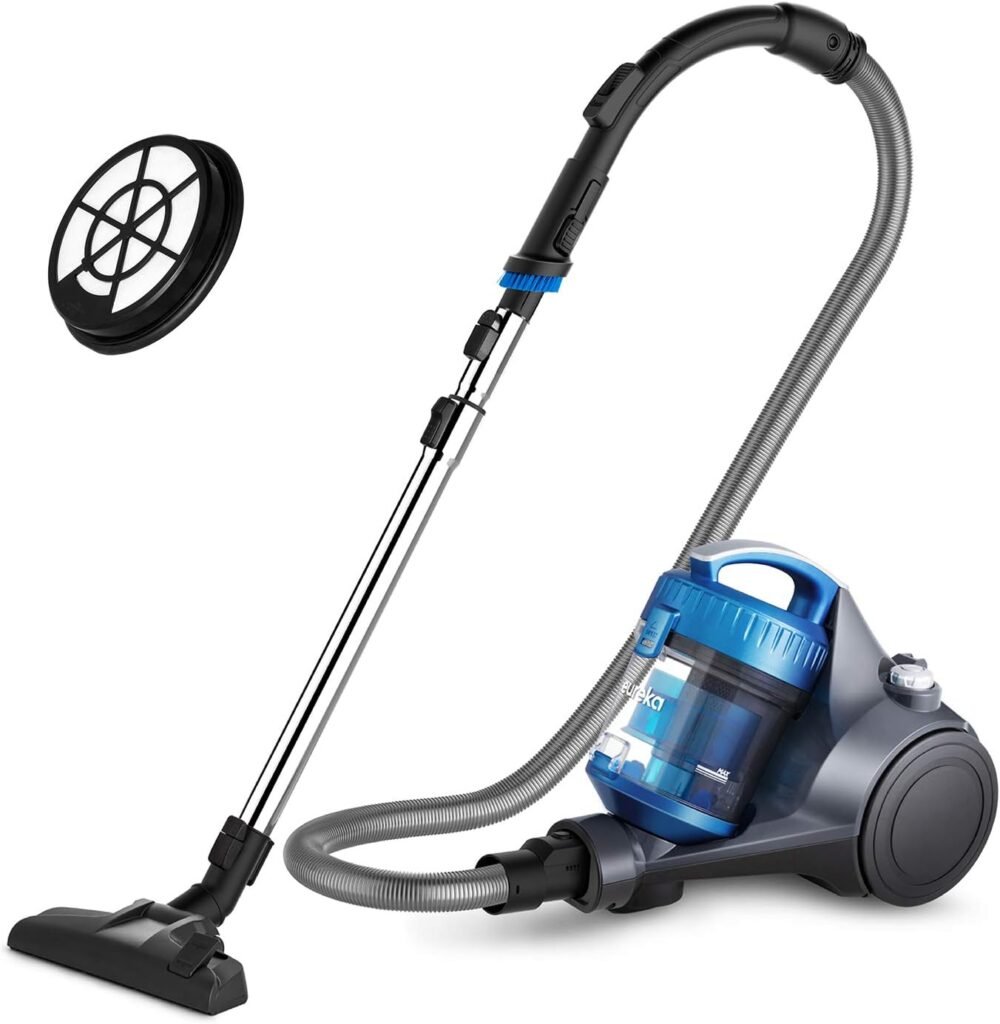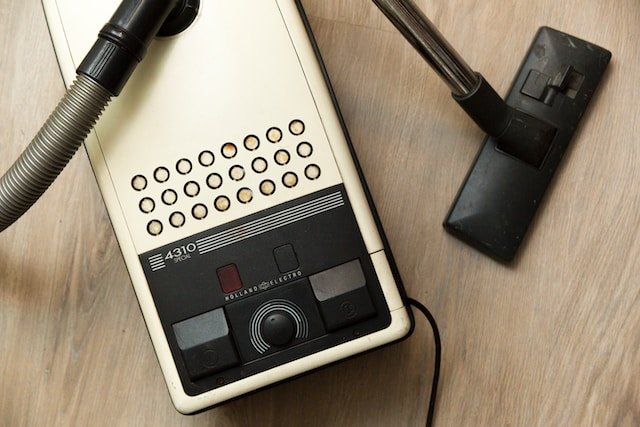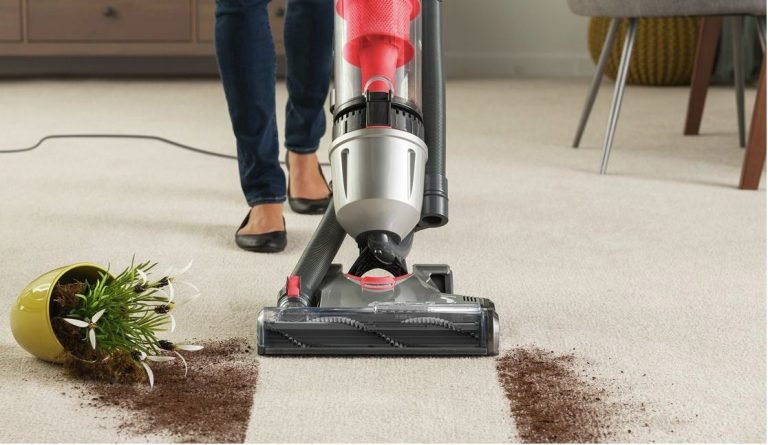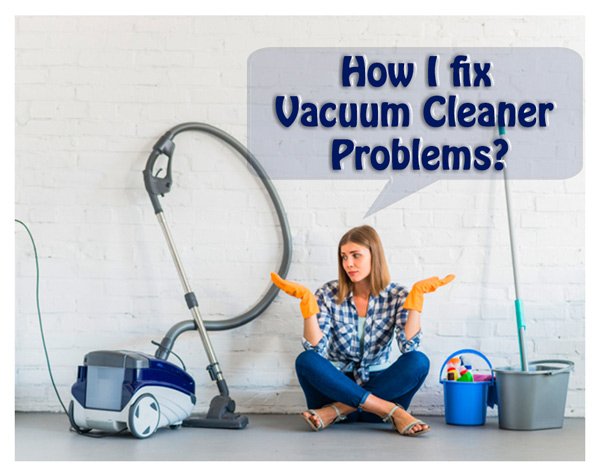Top Upholstery Vacuuming Tips For Spotless Home

Do you want to learn about upholstery vacuuming tips? Perhaps you have sunk into your favorite couch after a long day, only to be greeted by a mysterious crumb or a squadron of pet hairs staging a coup. I understand the frustrations.
So, in this guide, we’ll discuss about upholstery vacuuming tips. From choosing the right vacuum cleaner for your beloved sofa or recliner to mastering the delicate dance of pet hair removal, we’ve got your back—literally. Let’s banish crumbs, bid farewell to fuzz, and transform your living space into a haven of freshness. Say goodbye to the days of side-eyeing suspicious stains, and hello to a world where your upholstery reigns supreme. So, ready to dive into the secrets of upholstery vacuuming? Let’s begin!
Common Types of Upholstery at Home

Upholstery is crucial in our homes, providing comfort and style to our living spaces. It refers to the soft, padded textile covering used on furniture like sofas, chairs, and ottomans. Understanding the common types of upholstery is essential for making informed choices when furnishing our homes. Each type has unique characteristics, and knowing them can help us select the right upholstery that suits our preferences, lifestyle, and budget.
➪Cotton Upholstery:
Cotton upholstery is popular for many households due to its natural and breathable characteristics. This type of upholstery is comfortable and soft, making it a welcoming option for furniture. It is relatively easy to clean but may wrinkle and fade over time. Cotton upholstery comes in various colors and patterns, allowing homeowners to find the perfect match for their decor. Despite its tendency to wrinkle, the affordability and versatility of cotton make it a practical choice for many homes.
➪Leather Upholstery:
Leather upholstery exudes a timeless and sophisticated appeal. It is known for its durability, making it a great choice for furniture that experiences heavy use. Leather is resistant to stains and spills and develops a unique patina over time, enhancing its aesthetic appeal. While leather can be a bit pricey, its longevity often justifies the investment. Regular maintenance, such as occasional conditioning, can keep leather upholstery looking luxurious for years.
➪Microfiber Upholstery:
Microfiber upholstery has recently gained popularity for its durability and easy maintenance. Composed of finely woven synthetic fibers, microfiber is resistant to stains, making it an ideal choice for homes with children or pets. It is soft to the touch and has a luxurious feel without the high price tag of some natural fabrics. Cleaning microfiber upholstery is a breeze – a damp cloth is often needed to remove most stains, making it a practical option for busy households.
➪Velvet Upholstery:
Velvet upholstery adds a touch of opulence and luxury to any room. Its soft and plush texture characterizes this fabric, creating a sumptuous feel. Velvet upholstery comes in various rich colors, and it has a subtle sheen that adds depth to the overall design. While velvet is more prone to wear and tear than other fabrics, its aesthetic appeal often outweighs this concern for those looking to create a stylish and inviting living space.
The Benefits of Using Vacuum for Cleaning Upholstery
Keeping our homes clean is a constant effort, and using a vacuum can be a game-changer when it comes to upholstery. The benefits go beyond removing visible dirt – and maintaining a healthy and comfortable living space. Let’s delve into the detailed advantages of using a vacuum for cleaning upholstery and how it can contribute to the overall well-being of your home.
✔️Effective Dust and Allergen Removal
Vacuuming upholstery effectively removes dust, allergens, and tiny particles that settle into the fabric. Dust mites, pet dander, and other allergens can accumulate over time, affecting indoor air quality. A good vacuum with the right attachments can reach deep into the fibers, lifting away these particles and helping to create a cleaner and healthier environment, which is especially important for those with allergies or respiratory issues.
✔️Extended Upholstery Lifespan:
Regular vacuuming plays a vital role in extending the lifespan of your upholstery. Dust and dirt, if left unchecked, can grind against the fabric fibers, causing wear and tear. By vacuuming regularly, you prevent the build-up of these abrasive particles, preserving the integrity of the upholstery material. It keeps your furniture looking better for longer and saves you money in the long run by reducing the need for premature replacements.
✔️Prevention of Stains and Spills
Vacuuming is a proactive step in preventing stains and spills from becoming permanent. Vacuuming removes loose dirt and debris that could otherwise combine with spills, creating stubborn stains. Addressing messes promptly with a vacuum minimizes the chances of permanent damage to your upholstery. It is especially crucial in households with children or pets, where accidents are more likely to occur.
✔️Enhanced Air Circulation
Vacuuming upholstery removes contaminants and contributes to better air circulation within your home. When dust and allergens are reduced, the air quality improves, creating a fresher and more breathable indoor environment. It is particularly beneficial for individuals who suffer from allergies or asthma, as cleaner air can alleviate symptoms and promote overall well-being.
✔️Time and Effort Savings:
Using a vacuum for upholstery cleaning is a time-efficient and effortless way to maintain a clean home. Vacuuming is a quick and convenient solution, unlike some cleaning methods that require extensive effort and time. Modern vacuums come with attachments designed specifically for upholstery, making the process even more straightforward. This ease of use encourages regular cleaning, ensuring your upholstery stays in top condition with minimal hassle.
The benefits of using a vacuum for cleaning upholstery are far-reaching. From removing allergens and extending the lifespan of your furniture to preventing stains and improving air circulation, regular vacuuming is a simple yet powerful practice for maintaining a clean and healthy home.
Selecting the Right Vacuum Cleaner for Upholstery
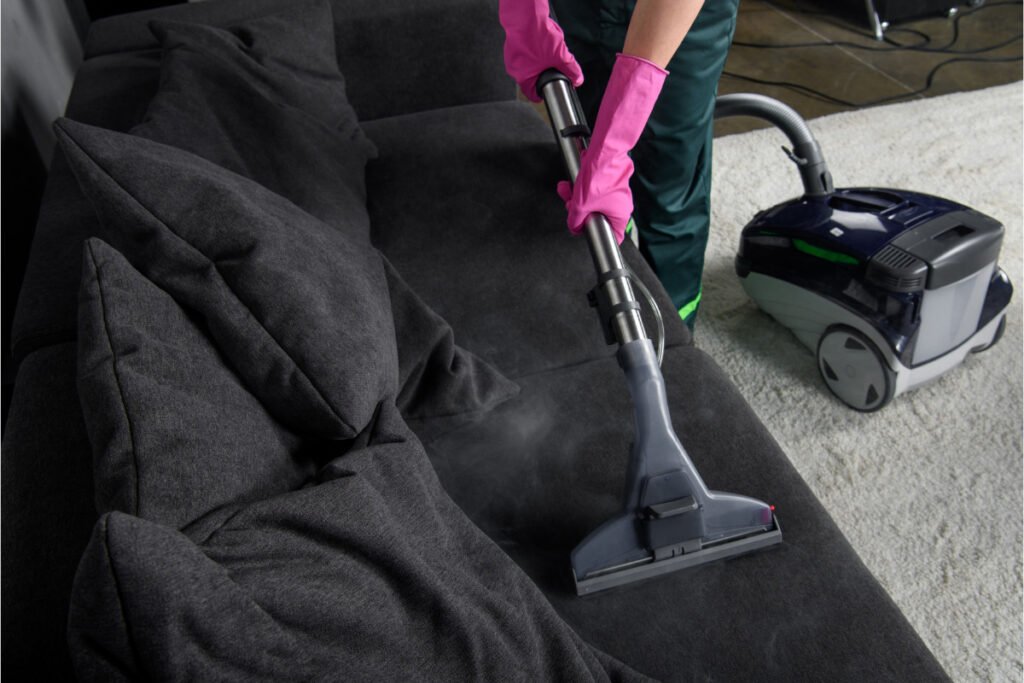
Selecting the right vacuum cleaner is crucial when it comes to keeping your upholstery clean and free from allergens. Not all vacuums are designed for upholstery cleaning, so choosing one that meets your specific needs is essential. Here are a few factors to consider when selecting a vacuum cleaner for your upholstery.
∎Type of upholstery
Different fabrics require different cleaning techniques, so it’s important to consider the type of upholstery you have. Delicate fabrics may require a vacuum with a gentler suction, while durable fabrics can handle a more powerful vacuum.
∎Attachments
Look for a vacuum cleaner that comes with dedicated upholstery attachments. These attachments are designed to effectively remove dust, dirt, and allergens from upholstery without causing damage. A crevice tool and a soft brush attachment are ideal for reaching tight corners and gently agitating the fabric.
∎Suction power
While it’s important to have enough suction power to remove debris effectively, too much suction can damage delicate upholstery. Look for vacuums with adjustable suction settings or ones specifically designed for upholstery cleaning.
∎Additional features
Consider additional features that may enhance your upholstery cleaning experience. For example, some vacuum cleaners have HEPA filters that capture fine particles and allergens, while others may have specialized stain-removal capabilities.
By taking these factors into account, you can ensure that you select a vacuum cleaner that is not only suitable for upholstery cleaning but also meets your specific cleaning requirements. Remember to always refer to the manufacturer’s instructions for properly using and maintaining your vacuum cleaner.
Preparing Upholstery for Vacuuming
Before you start vacuuming your upholstery, taking a few preparatory steps is important to ensure a successful cleaning session. By following these simple guidelines, you can protect your furniture and achieve the best results:
➀Inspect for Loose Threads or Damage
Begin by carefully inspecting your upholstery for any loose threads, tears, or other damage. It is important because vacuuming can potentially worsen existing issues. If you notice any loose threads or damage, consider repairing them before proceeding with the cleaning process.
➁Remove Small Objects and Debris
Next, remove any small objects or debris from the surface of your upholstery. It can include items like toys, coins, or crumbs. Removing these items beforehand will prevent them from obstructing the vacuum’s suction or causing potential damage to your furniture.
➂Prep the Area
Before you start vacuuming, clear the surrounding area to ensure unrestricted access to your upholstery. Move any furniture or obstacles that may obstruct your path, allowing you to vacuum the entire surface of your upholstery more effectively. It will help you achieve a thorough and even cleaning result.
- Inspect the upholstery for loose threads or damage
- Remove small objects and debris from the surface
- Clear the area for unrestricted access to your upholstery
By preparing your upholstery for vacuuming, you can ensure a smoother cleaning process and better maintenance of your furniture’s cleanliness and condition.
Dealing with Pet Hair and Allergens

Pet hair can be a constant struggle when keeping your upholstery clean. However, with the right techniques and tools, you can effectively deal with pet hair and maintain allergen-free furniture.
🐾Alternative Tools for Pet Hair Removal:
If your vacuum cleaner is not fully effective in removing pet hair, there are alternative tools you can use. Rubber gloves can be used to remove pet hair by simply rubbing your gloved hands over the upholstery. The hair will cling to the rubber and can be easily collected. You can also use a fabric brush or a lint roller to pick up pet hair.
🐾Regular Vacuuming Routine:
To keep pet hair and allergens at bay, it’s important to establish a regular vacuuming routine for your upholstery. Vacuum all furniture surfaces, including cushions, crevices, and corners. Aim to do this at least once a week or more frequently if you have multiple pets or family members with allergies.
🐾Utilize Upholstery Attachments:
When using your vacuum cleaner, use the appropriate upholstery attachment. These attachments are specifically designed for cleaning upholstery and can help to effectively remove pet hair and allergens. The soft brush or upholstery nozzle attachment can easily glide over the fabric surface without causing any damage.
🐾Prevention Is Key:
To minimize the accumulation of pet hair on your upholstery, it’s important to implement some preventive measures. Keep your pets well-groomed and regularly brush them to reduce shedding. You can also use pet covers or throws to protect your upholstery from excessive pet hair. Additionally, consider using a fabric protector spray to create a barrier against stains and pet hair.
By following these tips and incorporating them into your regular cleaning routine, you can effectively deal with pet hair and allergens on your upholstery. Remember to be consistent and thorough in your cleaning efforts to maintain a clean and comfortable living space.
Cleaning Upholstery with Special Requirements
Different types of fabrics may have specific requirements when it comes to cleaning upholstery. To ensure proper cleaning and prevent damage, following the manufacturer’s instructions and checking the fabric cleaning code is crucial. Here are some essential tips for cleaning upholstery with special requirements:
❕Read the cleaning instructions
Before you begin cleaning, always refer to the manufacturer’s instructions for your specific type of upholstery. The instructions will guide the appropriate cleaning solutions, techniques, and any restrictions or precautions to be aware of. Following these instructions will help you avoid damaging the fabric and achieve the best cleaning results.
❕Test on a small, inconspicuous area
Before cleaning the entire upholstery, testing the cleaning solution on a small, hidden area is essential. It will help you determine if the solution is safe to use and if there are any adverse effects on the fabric. Apply a small cleaning solution to the test area and blot it with a clean cloth. You can clean the rest of the upholstery if there are no negative reactions.
❕Use specialized cleaning products.
Some types of upholstery, such as leather or delicate fabrics, may require specialized cleaning products. These products are designed to effectively clean and protect the specific type of upholstery without causing damage. Look for cleaning solutions specifically formulated for your upholstery type and follow the instructions provided.
❕Gentle cleaning techniques
When cleaning upholstery with special requirements, it’s important to use gentle cleaning techniques to avoid damaging the fabric. Avoid scrubbing vigorously or using excessive force, as it can weaken the fibers and cause permanent damage. Instead, gently blotting or dabbing when applying the cleaning solution and removing stains.
By following these tips and taking extra care when cleaning upholstery with special requirements, you can maintain the beauty and longevity of your furniture. Always remember to read the instructions, test on a small area, use specialized products, and employ gentle cleaning techniques. Your upholstery will stay clean and fresh for years with the right approach.
Maintaining a Cleaning Schedule

To keep your upholstery clean and in top condition, it’s important to establish a regular cleaning schedule. Here are some tips to help you maintain a consistent cleaning routine:
👉Assess your usage and traffic
Consider how often your furniture is used and the level of traffic it receives. High-traffic areas like living rooms and dining areas may require more frequent vacuuming than low-traffic areas like bedrooms or guest rooms.
👉Set a cleaning frequency
Based on your assessment, establish a cleaning frequency that suits your needs. It could be once a week for heavily used areas and once every two weeks for less frequently used areas. Consistency is key to maintaining cleanliness and preventing dirt and allergens from building up.
👉Create a cleaning schedule
Put your cleaning schedule into action by creating a weekly or monthly calendar. Assign specific days or time slots for vacuuming each area of your upholstery. It will help you stay organized and ensure you don’t overlook any areas.
👉Stick to your schedule
Commit to sticking to your cleaning schedule. Treat it as a regular chore essential for the well-being of your furniture and the overall cleanliness of your home. Consistency will make the task easier and more manageable in the long run.
Following a regular cleaning schedule can effectively maintain your upholstery’s cleanliness and prolong its lifespan. Remember to adjust your cleaning frequency based on usage and traffic patterns in your home. A consistent cleaning routine allows you to enjoy a spotless and allergen-free environment.
Troubleshooting Common Issues
While upholstery vacuuming is generally straightforward, you may encounter some common issues along the way. Here are a few troubleshooting tips to help you tackle them effectively:
📌Stubborn Stains:
If you come across a stubborn stain on your upholstery, it’s important to address it properly. First, identify the type of stain and refer to specific cleaning techniques suited for that particular stain, such as using a fabric cleaner or a mixture of mild detergent and water. Avoid scrubbing vigorously, as it can damage the fabric. Instead, gently blot the stain with a clean cloth or sponge to lift it.
📌Fading or Discoloration:
If you notice fading or discoloration on your upholstery, it could be caused by exposure to sunlight or certain cleaning products. To prevent further damage, avoid placing your furniture in direct sunlight and use upholstery protectors to shield it from UV rays. Additionally, test cleaning products on a small, inconspicuous area first to ensure they don’t cause discoloration.
📌Lint and Debris:
If your upholstery vacuuming leaves behind lint or debris, you may need to adjust your technique. Use a clean upholstery attachment or brush and vacuum in a pattern, working from top to bottom. Check the suction power of your vacuum and adjust it to a lower setting if necessary. You can use a lint roller or adhesive tape to pick up any remaining particles for stubborn lint.
📌Ongoing Odors:
If you’re dealing with persistent odors on your upholstery, try using baking soda as a natural deodorizer. Sprinkle a generous amount of baking soda over the upholstery and let it sit for a few hours or overnight. Then, vacuum up the baking soda using your upholstery attachment. It will help absorb any unpleasant odors and leave your upholstery smelling fresh.
By following these troubleshooting tips, you can address common issues that may arise during the upholstery vacuuming process. Always be gentle with your upholstery and take the necessary precautions to avoid further damage. Keep your furniture looking its best and enjoy a clean and fresh living space.
Additional Carpet Vacuuming Tips and Hacks
When it comes to keeping your upholstery spotless, some additional tips and hacks can make your vacuuming routine even more effective. Try out these suggestions to achieve a cleaner and fresher upholstery:
- Use baking soda: Sprinkle baking soda on your upholstery before vacuuming to help eliminate odors and freshen the fabric.
- Try baby wipes: Keep a pack handy for quick spot cleaning. They are gentle enough to use on upholstery and help tackle small stains.
- Apply fabric protectors: Consider using fabric protectors to repel stains and spills. These products create a protective barrier on your upholstery, making cleaning easier in case of accidents.
- Wash throw blankets and pillows: Don’t forget to wash them regularly to keep them fresh and free from dirt and allergens. Follow the care instructions for each item.
Remember, acting quickly is key when treating stains on upholstery. The faster you address a stain, the better your chance of successfully removing it. Remember these additional tips and hacks to elevate your upholstery vacuuming routine and maintain a cleaner, healthier home.
Recommended Vacuum For Upholstery Cleaning
Having the right vacuum cleaner is essential when keeping your upholstery clean and free from allergens. Here are some recommended vacuum cleaners that are specifically designed for upholstery cleaning:
Kenmore Portable Carpet Cleaner
Say goodbye to stubborn stains on your upholstery with the Kenmore Portable Carpet Cleaner, a true hero in the world of cleaning. Specially designed to tackle tough stains, this lightweight and portable carpet cleaner is a must-have for keeping your upholstery looking as good as new.
Accidents are inevitable, but with the Kenmore Portable Carpet Cleaner by your side, you’re always one step ahead. Its powerful stain-removing capabilities make it the go-to solution for spills, pet mishaps, and everyday messes, ensuring your upholstery stays spotless.
Equipped with dual tanks, this carpet cleaner efficiently separates clean and dirty water, guaranteeing you always use a fresh cleaning solution. The compact design adds to its appeal, making it easy to maneuver and store, even in tight spaces.
I also appreciate the dual tanks. It keeps the dirty water separate, so you’re not just spreading it around. Plus, the compact design means I can store it in my closet without taking up much space. In simple terms, the Kenmore Portable Carpet Cleaner is the way to go if you want a carpet cleaner that’s great for upholstery, easy to use, and works like a charm on stains. It’s become my secret weapon for keeping my furniture looking brand new.
Eureka WhirlWind Vacuum Cleaner
Introducing the Eureka WhirlWind Vacuum Cleaner, an innovative multi-surface cleaning solution that removes the hassle of keeping your upholstery spotless. Lightweight, easy to maneuver, and packed with user-friendly features, this vacuum is a game-changer for anyone seeking a reliable upholstery cleaning companion.
With a generous 2.5L dust container, the Eureka WhirlWind ensures extended cleaning sessions without needing constant emptying. Say goodbye to maintenance costs, as this vacuum is designed for efficiency and longevity, giving you a cost-effective and durable cleaning solution.
The 2-in-1 integrated crevice tool makes reaching those tricky spots on your upholstery a breeze. Whether between sofa cushions or along the edges of your favorite chair, this tool is your secret weapon for a thorough cleaning. It made my cleaning routine much easier, and my furniture never looked better.
BISSELL Little Green Upholstery Cleaner
Meet the BISSELL Little Green Upholstery Cleaner, a compact powerhouse designed to make upholstery cleaning a breeze. With its powerful suction and exclusive specialty tools, this portable and versatile cleaner is a top choice for maintaining spotless furniture.
The BISSELL Little Green boasts a large tank capacity, ensuring you can tackle multiple cleaning sessions without constant refilling. Say goodbye to stubborn stains and odors – this upholstery cleaner is specifically crafted to handle the toughest messes, leaving your furniture refreshed and revitalized.
It is equipped for multi-purpose cleaning and includes the 3″ Tough Stain Tool, designed to target and eliminate deep-seated stains. The HydroRinse Self-Cleaning Hose ensures easy maintenance, making this upholstery cleaner a hassle-free addition to your cleaning routine.
So, choose your preference and start cleaning your upholstery.
Frequently Asked Questions
Can I use the same vacuum cleaner for different types of upholstery fabrics?
Absolutely! Most vacuum cleaners come with adjustable settings or attachments, making them versatile for various upholstery fabrics. Just check the manufacturer’s guidelines and adjust the settings accordingly to avoid any potential damage.
Is it necessary to vacuum underneath cushions and in between cracks?
Yes, it’s a good idea to vacuum underneath cushions and in between cracks regularly. Dust, crumbs, and debris tend to accumulate in these hidden areas, and vacuuming helps maintain a clean and healthy environment for your upholstery.
What should I do if my vacuum cleaner leaves marks on my upholstery?
If your vacuum leaves marks, it might be pressing too hard. Try reducing the pressure, and make sure the vacuum is clean and well-maintained. If the issue persists, consider using a softer attachment or adjusting the height settings to prevent any potential damage.
Can vacuuming help in maintaining the color of my upholstery?
Absolutely! Regular vacuuming removes dirt and debris that can cause discoloration over time. It’s a simple yet effective way to preserve the vibrant colors of your upholstery and keep it looking fresh.
How can I protect my upholstery from wear and tear over time?
To protect your upholstery, consider using furniture covers or throws. Additionally, be mindful of sharp objects that could snag or tear the fabric. Regular vacuuming and prompt cleaning of spills go a long way in preventing wear and tear.
What are some common mistakes to avoid when vacuuming upholstery?
One common mistake is using the wrong attachment for delicate fabrics, leading to damage. Ensure you’re using the appropriate tool or setting for your upholstery type. Also, avoid rushing the process – take your time to allow the vacuum to lift dirt and debris effectively.
Final Words
Overall, mastering these upholstery vacuuming tips is about adopting simple yet effective practices that preserve your furniture’s cleanliness and contribute to its longevity. Regular vacuuming, using the right attachments, and paying attention to often-neglected areas like underneath cushions are key elements in maintaining a fresh and inviting living space.
Remember, the goal isn’t just cleanliness; it’s also about protecting your upholstery from wear and tear over time. By incorporating these straightforward tips into your cleaning routine, you’ll keep your upholstery looking its best and create a healthier environment for you and your loved ones.


